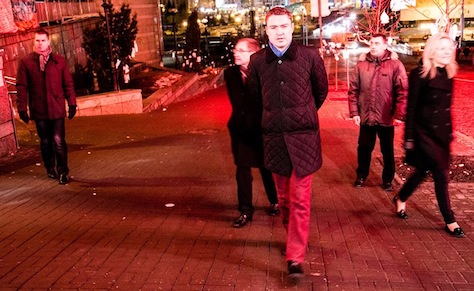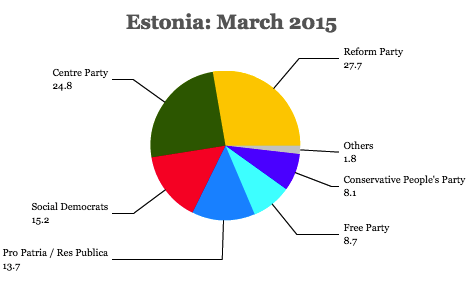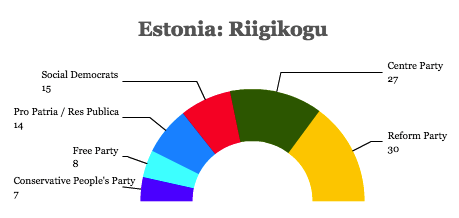Estonia’s parliamentary election proves what is becoming a nearly iron-clad thesis about Baltic politics: so long as social democratic parties in the Baltic States nurture ties with Moscow and pitch themselves to the narrow pool of ethnic Russian voters, centrist and center-right governments will continue to win elections and govern.![]()
So it was in Estonia on March 1, as it became clear that the center-right Eesti Reformierakond (Estonian Reform Party) would win its third consecutive national election, the first under its 35-year-old prime minister Taavi Rõivas (pictured above in Ukraine last year), who is expected to continue leading Estonia’s government.
* * * * *
RELATED: Russian threat dominates Estonian election campaign
* * * * *
Despite polls that showed that the center-left Eesti Keskerakond (Estonian Centre Party), led by former prime minister and Tallinn mayor Edgar Savisaar might emerge as the leading party, Reform bested the Centre Party by nearly 3%.
Nevertheless, both the Reform Party and its junior partner in government, the Sotsiaaldemokraatlik Erakond (Social Democratic Party), lost some ground — the two parties will, in aggregate, lose seven seats and six short of an absolute majority in the Riigikogu, Estonia’s 101-member unicameral parliament.
Luckily for Rõivas and the Reform Party, there are two new parties in the Estonian parliament, and one of them is a strong fit for a three-party coalition. The liberal Eesti Vabaerakond (Free Party), founded last September by Andres Herkel, an Estonian intellectual, could easily find common ground with Reform.
The big loser of Sunday’s cote is the Centre Party, which couldn’t persuade Estonian voters (or at least the ethnic Estonians that comprise nearly 75% of the electorate) that their softer line toward Moscow and Russian president Vladimir Putin would necessarily enhance their security.
Though Estonia, with just 1.3 million people, is the smallest of the Baltic states, the Reform Party’s victory (and the correspondingly unimpressive Centre Party results) must be a huge disappointment for the Kremlin as well. It’s hard to believe that Russian and NATO forces will come to blows over the Baltic states, but if they do, it could happen in Estonia, where 25% of the population is ethnically Russian, and particularly in Narva, where 95% of the city’s residents speak Russian.
As recently as autumn 2012, the Kremlin was delighting in strong performances by sympathetic governments (or parties) in elections in four neighboring countries — Latvia, Lithuania, Belarus and Ukraine. Since then, Ukraine has overthrown its pro-Russian president, Viktor Yanukovych, and Estonian voters have now rejected the Centre Party in Estonia. So far as elections in former Soviet states matter, Putin is essentially 0-2 in the past year. That should call into question the efficacy of his newfound aggression, insofar as Russian policy is apparently alienating the citizens of former Soviet republics who might otherwise be disposed to building constructive ties with a more pluralistic Russia.
In the coming weeks and months, Rõivas’s chief security goal will be to achieve a kind of detente with the Kremlin to prevent Narva from becoming a flashpoint between the Putin administration and Western governments while defending his country’s sovereignty in the face of possible Russian provocations — Moscow has already invaded Estonian airspace in recent months. Moreover, despite significant economic turbulence over Reform’s previous two terms in power, Estonian voters seem to have rewarded Rõivas (and his predecessor for nine years, Andrus Ansip) for consistent leadership on economic policy.


